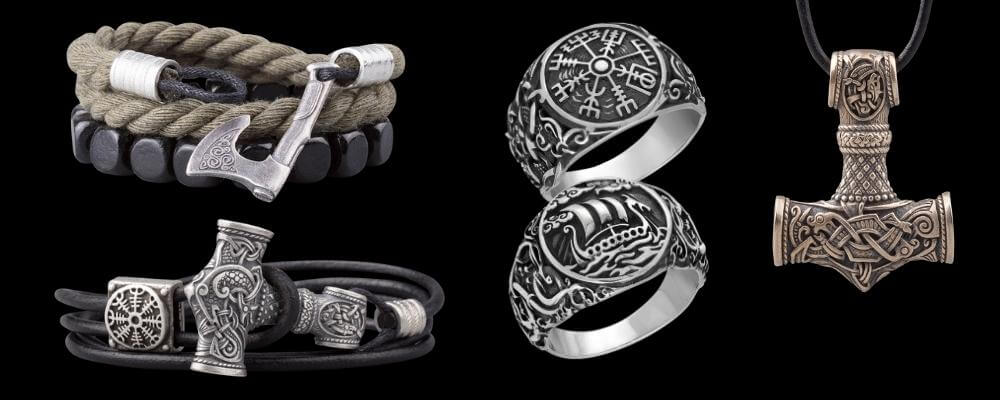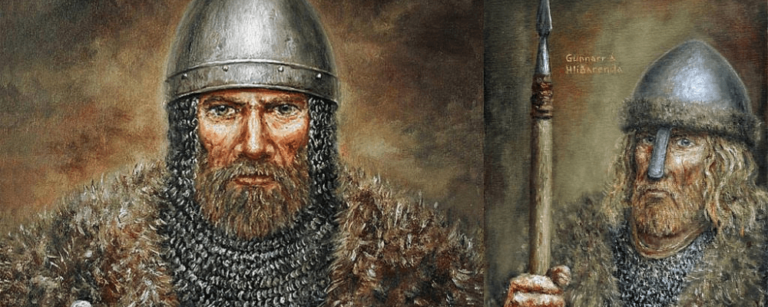Gunnar Hamundarson is one of the most famous Icelandic Viking heroes. His life story is recorded in the Njals Saga. But, while Gunnar was most likely a real person, his character is used in the saga to tell a moral story.
While Gunnar is described as a warrior without equal, unlike the bloodthirsty warriors of many stories, he prefers peace.
However, again and again he is forced to resolve issues with his Viking neighbours by the sword due to ongoing blood feuds and the requirement to exact vengeance.
The saga is a moral tale warning of the dangers of responding to slights with violence and propagating feuds with blood.
Let’s take a look at Gunnar and his story.
Who was Gunnar Hamumdarson?
Gunnar was a 10th century Icelandic Chieftain that lived in Hildereni in Fljotshlid.
He was the son of Hamundar Gunnarson and Rannveig Sigfusdottir.
He had at least two brothers, Kolskeggr and Hjortr, and one sister, Arnhunnr, who was married to Hroar Tungugodi.
The Njals Saga
A largely fictionalised version of Gunnar’s life is told in the Njal’s saga, a 13th century Icelandic saga that describes events that took place between 960 and 1020.
The author of the saga is unknown, but he (we only know of male authors of the sagas) seems to have a clear purpose.

The story is a warning about the impact of blood feuds in Iceland in the years following the settlement. It resulted in years of bloodshed as Vikings raised their swords against one another for the smallest insult to their manhood.
Entire families wiped one another out as they were killed one after the other in tit-for-tat blood feuds.
This is a theme that was covered in Vikings as we see the inhabitants of Loki’s new colony killing one another as part of an ongoing blood feud.
The saga also contains various omens and prophecies that predict how one action will cause disaster. This may reflect an element of Viking ideology that fate is largely already written.
The Ideal Warrior
The Gunnar described in the saga is the ideal warrior and seems to be without fault.
He was the chieftain of his clan because he was considered the most powerful warrior.
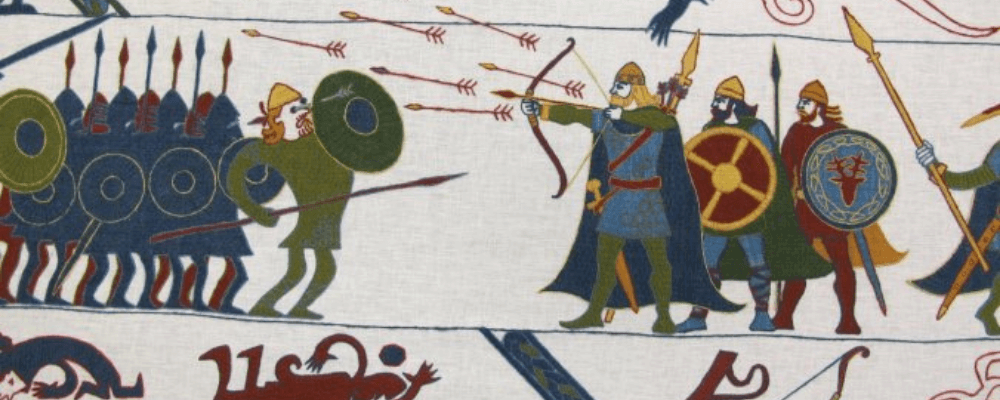
He was so strong that he could jump his own height in full armour. He wielded a sword so quickly that it looked like he had three in his hand.
He was also an expert bowman, and could throw a rock that would hit a man between the eyes from a great distance.
However, his favourite weapon was the Atgeir, which was a type of hewing spear. He wielded it with such great skill that he became famous for it.
It was said that he took his Atgeir in battle from a man called Hallgrimur while on a raid to the island of Eysysla in Estonia (the Vikings raided east as well as west).
He is also described as handsome without equal. He had a straight nose, sharp blue eyes, ruddy cheeks, and thick lustrous hair that he kept well groomed – something that Viking considered very important.
He was also an amazing swimmer, and without equal in pretty much any game or physical challenge.
And he was intelligent, as was clear from his manner of speech. He was mild mannered, a loyal friend, and gave excellent advice.
But unlike many of the ferocious Vikings of legend, Gunnar preferred to resolve problems peacefully wherever possible.
Unfortunately for Gunnar, he often found himself in a position which meant that this was not possible.
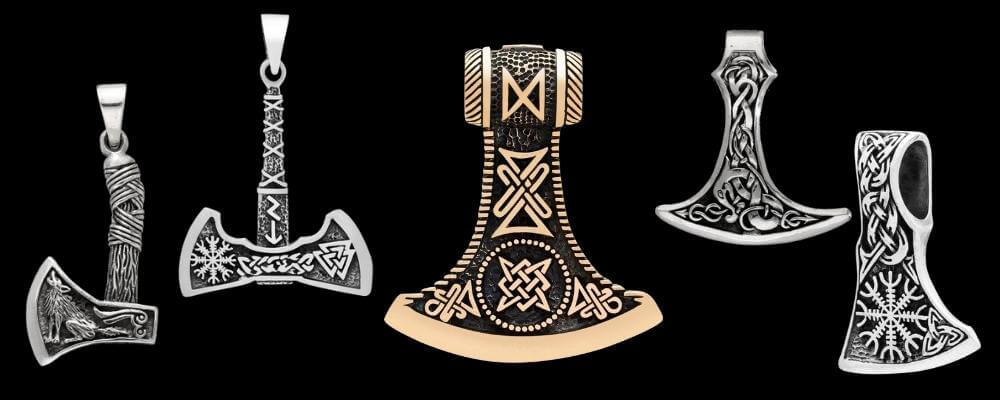
Hallgerdr Hoskuldsdotter
According to the saga, many of Gunnar’s problems began with his wife, Hallgerdr Hoskulsdoter of Hoskuldsstadir in Laxardal in Dalasysla.
He met her at a gathering when he returned from a trip to Scandinavia in high honour. They two made an instant connection.
However, Gunnar’s best friend Njall advised him not to marry Hallgerdr, firstly because their relationship was based purely on lust and not the mutual benefit of the individuals and their families.
The Vikings, like most cultures until recent times, used marriage as a way of forming alliances and consolidating power.
Njall’s second reason was that both of Hallgerdr’s previous husbands died at the axe of her doting foster father Thjostolfr, both of which she is said to have instigated, the first because she wanted rid of her husband, and the second due to an argument.
The rules of blood feud and honour that were active in Iceland at the time meant that Thjostolfr paid for this with his own life.
But Gunnar ignores the advice of his friend and decides to marry Hallgerdr.
The Feuds of Hallgerdr
While Gunnar tried to avoid feuds, his new wife made that impossible. Shortly after their marriage, she developed a feud with Njall’s own wife, Bergthora.
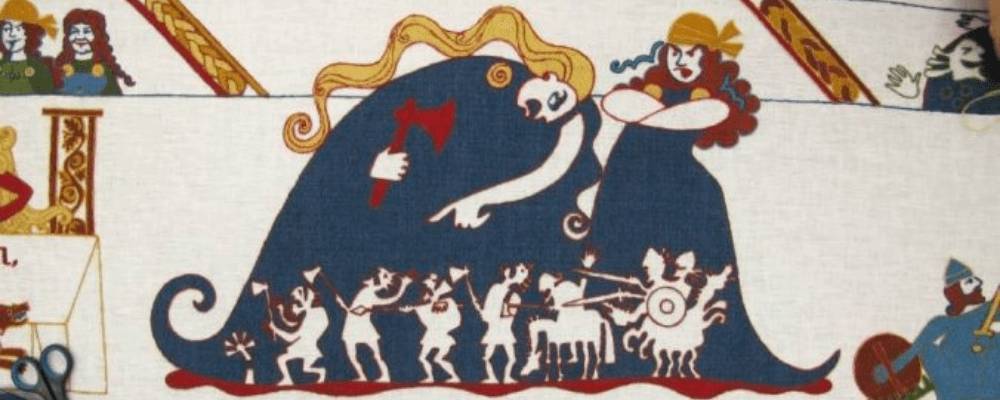
Hergerdr charmed several men into killing members of Bergthora’s family. Naturally, Bergthora responded, and the feud quickly escalated.
Gunnar and Njall, determined to do the right thing, made financial settlements according to the status of the victim after each killing.
Hallgerdr creates another issue when she uses her slave Melkolfur to burgle the home of a churlish old man called Otkell, but she is discovered.
Gunnar offers generous financial compensation to the man, but he refuses and insists on taking the case to court, where Gunnar wins.
Nevertheless, Gunnar is outraged with the conduct of his wife and slaps her, something he will regret later.
Otkell is unable to let the problem drop, and he accidentally injures Gunnar in the following interactions.
A series of events follow in which Gunnar’s Viking honour is insulted, and soon he has no choice but to kill Otkell in vengeance and to maintain his honour and position.
Gunnar’s Feuds
But while Gunnar’s wife may have been responsible for a number of his feuds, they did not all come from her. The society in which he was living in made such conflicts very difficult to escape.
For example, in another story Gunnar accepts a horse-fight with a man called Starkadr.
But Gunnar’s opponent does not play fair, and cheats in the match, which launches a feud between the two.
As a result, Gunnar and his men are ambushed by Starkadr and his supporters. In the following fight, fourteen of the attackers are killed, but so is one of Gunnar’s brothers.
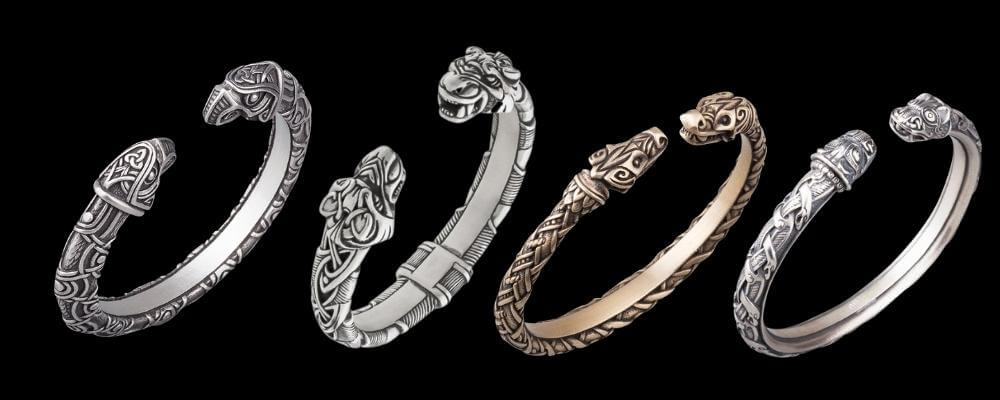
The Death of Gunnar
It should be no surprise that the death of Gunnar was also the result of one of these Viking honour feuds.
One day Njall turns up at Gunnar’s house with a prophecy warning him that he should not kill two men from the same family. If he does, his own demise will follow shortly.
Mordur Valgardsson, a man who was very jealous of Gunnar, hears the prophecy and decides to make it happen. He sets up attacks on Gunnar so that he is forced to kill two brothers from the house of Gissur the White.
Because of their role in these deaths, Gunnar and his other brother are exiled from Iceland for a period of three years.
While Gunnar initially accepts this fate, as he turns to leave, he looks back on the beauty of his own farmhouse and decides to stay and fight for what is his.
Gunnar sets himself up in his home and waits for the avenging group of Vikings to arrive.
A scout is sent to see if he is at home, and Gunnar hits them with his atgeir. The man returns to the others and says that he does not know if Gunnar is at home, but his atgeir certainly is.
The attack on the house begins and Gunnar takes down many of the attackers with his prestigious skill at the bow. But, during the course of the battle, his bow string breaks.
Gunnar asks his wife to give him some of her hair to repair the bow. But Hallgerdr refuses, as a petty revenge for the time he struck her.
Consequently, Gunnar is forced to take on the assailants single-handedly in battle, and is eventually killed, and the prophecy fulfilled.
The Story of Gunnar
What do you think of the story of Gunnar Hamumdarson? How much is fact and how much is fiction?
And what do you think of the moral position that the saga takes on Viking blood feuds?
Do you think that they were an important mechanism in Viking society, or a destructive influence that undermined communities?
And finally, what do you think of the portrayal of Hallgerdr as the source of many of Gunnar’s problems? Do you think that this is likely, or that she too is being used as a literary foil?
